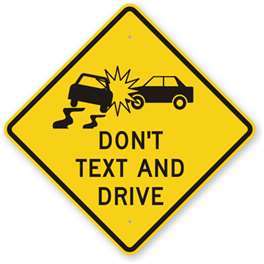Only sixty per cent of drivers concentrate when they are behind the wheel
 |
LONDON--Feb. 11, 2014: Only sixty per cent of drivers concentrate when they are behind the wheel, according to a poll by IAM/Vision Critical of nearly 1500 drivers.1
However, there is good and bad news in these findings.
The good news is that older drivers are much less likely to lose concentration while driving. Seventy-three per cent of over 65 year-olds say they concentrate on the road all of the time that they are driving. Twenty-six per cent said that they concentrate most of the time.
The bad news is that 50 per cent of younger drivers aged 18-24 admit to not concentrating on driving 100 per cent of the time. Not far behind, 47 per cent of 24-34 year olds admit to not concentrating.
Nearly a quarter of drivers (24 per cent) say that simply daydreaming was the most common reason for not concentrating. Among 18-24 year-olds the figure is 30 per cent.
Other reasons given for not concentrating include stress (22 per cent), thinking about what you will be doing when you arrive (21 per cent) and thinking about family, friends and personal relationships (21 per cent).
In the North East and in Wales, 64 per cent of drivers, said they concentrate all the time.
Londoners are most likely to be distracted while driving, with forty-seven per cent admitting to not concentrating one hundred per cent on the road. Yorkshire and Humberside, the South West and Scotland were not far behind with 46%.
IAM chief executive Simon Best said: “Signs of not concentrating such as missed turnings or uncancelled indicator lights are commonplace. Simply not concentrating is a key cause of crashes yet it is not borne out in statistics because drivers rarely admit to it in police reports or on insurance forms.”
“These results reconfirm stereotypes surrounding younger drivers and the ease with which they can be distracted away from staying safe. The key is to build up as wide a range of experiences as possible as you learn and to look upon your driving as a skill that needs continuous improvement.”
Survey undertaken by Vision Critical, total number of respondents: 1447. Regional breakdown
Percentage (%) admit to not concentrating London 47. Yorkshire and Humberside 46. South West 46. Scotland 46. East 42. East Midlands 40. North West 39. South East 39. West Midlands 37. North East 34. Wales 34.
The IAM is the UK’s largest independent road safety charity, dedicated to improving standards and safety in driving, motorcycling and cycling. The commercial division of the IAM operates through its occupational driver training company IAM Drive & Survive. The IAM has more than 200 local volunteer groups and over 100,000 members in the UK and Ireland. It is best known for the advanced driving test and the advanced driving, motorcycling and cycling courses. Its policy and research division offers advice and expertise on road safety.


